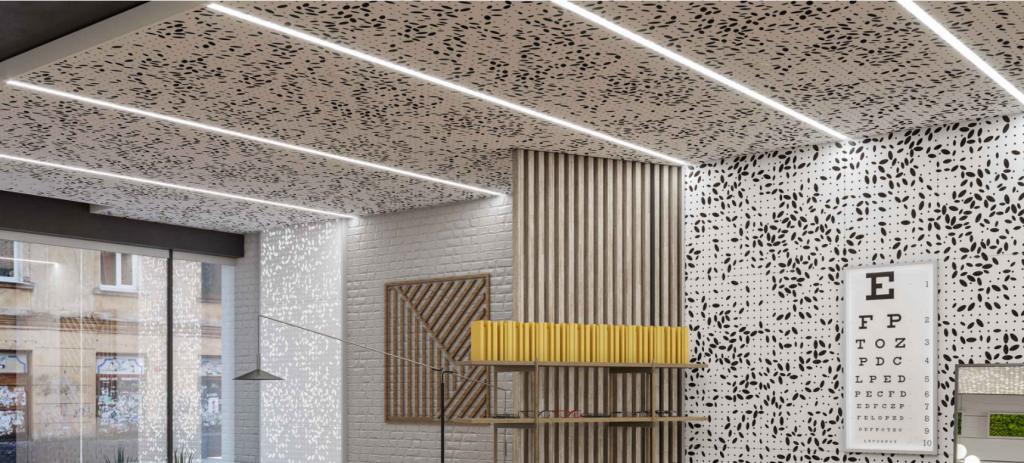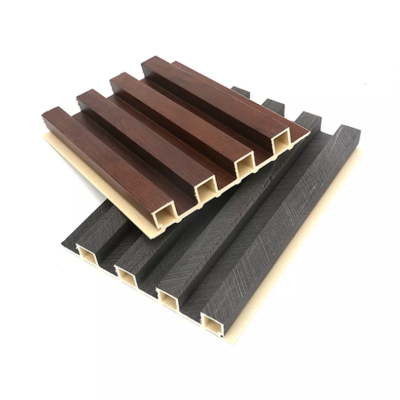Gypsum board is one of the most often utilized building materials, particularly in interior design projects. Gypsum has several uses in the construction industry because of its characteristics and many products.
Gypsum board is a common surface material used in building walls and ceilings. Gypsum can also be used in the form of plaster in the field.
What Is Gypsum Board?
The Gypsum board is made of a set gypsum core overlaid with specially made paper firmly glued to the core.
It offers a surface ideal for receiving either paint or paper and is made to be utilized without adding plaster to walls, ceilings, or partitions.
Gypsum board is widely utilized in drywall construction, which does away with plaster. It is also available to eliminate the need for additional ornamentation, with one side covered in aluminum and another covered in foil that reflects heat, imitation wood grain, or another pattern on the outer surface.
The various varieties of gypsum board that is typically offered on the market include gypsum form board, backing board, core board, fire-resistant gypsum board, and water-resistant gypsum board.
Gypsum board sometimes referred to as drywall, plasterboard, or wallboard, is a term for panels consisting of gypsum plaster sandwiched between two thick sheets of paper. Many characteristics of gypsum board make it a desirable building material.

Properties of Gypsum Board
Due to the following gypsum board features, its use in construction has significantly increased.
The Fire Resistance of Gypsum
It has built-in fire resistance. They guarantee that people are protected by preventing the risk of fire from spreading. Now, the water that is present in gypsum products is what gives them fire resistance. A 15 mm thick sheet of gypsum plasterboard would hold almost a liter of clean water.
A shield forms over the gypsum product when a fire approaches water due to evaporation. It would help to stop the fire from spreading to more parts

The Incombustibility of Gypsum
Products made from gypsum heat up the water crystals that are already there. Calculations refer to the heat-induced gypsum dehydration process.
The calculations lead to the placement of a covering over the parts, keeping them from igniting and preserving a lower, safer temperature for the materials surrounding them.
Acoustical characteristics of gypsum
The acoustic and sound-insulating properties of gypsum products are given more consideration during manufacturing. Other projects, such as masonry, which is frequently used in greater thicknesses and has now been proven to need less labor than gypsum, could be successful.
For instance, we can construct drywall that is 75 mm thick and achieve the same sound absorption as a wall that is 110 mm thick.

The thermal properties of gypsum
It would be possible to maintain a suitable equilibrium between indoor temperature and humidity thanks to the thermal properties of gypsum construction.
Gypsum is utilized to give additional insulating qualities while creating formwork and plasterboard voids. During interior construction, plasterboards are a vapor barrier to lower indoor humidity.
Uses for Gypsum Board
Following are some examples of how gypsum board is used:
Gypsum is in higher demand since it can provide an aesthetically pleasing and comfortable atmosphere when used in a building.
• It is a widely accessible natural substance.
• Nowadays, gypsum construction or gypsum products are used to prepare most interior and external construction characteristics.
• The time and expense involved in gypsum construction have led to its advancement in a continuous process.
• As time passes, gypsum materials acquire more qualities, such as improved fire resistance and acoustic qualities for noise insulation.
Gypsum Board Types
The various varieties of gypsum boards used in building construction are listed below.
A whiteboard on drywall
Typically, drywall has a brown side and a white side. It is available in several sizes and thicknesses ranging from 3/8 inches to one inch, making it perhaps the most affordable drywall variety.
This is the most popular form and often comes in four-by-eight-foot panels on the market.
Applications
It is also utilized as a tile backer in some limited wetting locations, such as bathrooms, water closets, basement walls, kitchens, and laundry and utility rooms. It has a strong resistance power to withstand moisture conditions.
Support for Gypsum Board
In construction projects, where several layers of gypsum board are desired for excellent fire resistance, sound control, and wall strength, it contains a base in multiple layers.
It is available on a backing board with aluminum foil glued to the rear face and features grey liner paper on the front and back faces. The boards are 14 to 1 inch thick, 4 to 16 feet long, and 16 to 48 inches broad.
Applications: applied to ceiling and walls
• Self-leveling screeds are made from gypsum plaster blocks, which are also used to make tiles and partitions.
• Fiberboard with plaster
Gypsum Board Resistant to Water
This kind has a water-resistant gypsum core and face paper that is water-repellent. It can serve as the foundation for wall tile in bathrooms, showers, and other moist spaces.
Applications Interior walls and ceilings in residential and commercial buildings can be covered with this material, but exceptional moisture or water-related assemblies are also needed.

Gypsum Board That Resists Fire
Due to the peculiar behavior of the gypsum core when exposed to fire, a fire-resisting gypsum board offers adequate fire protection in buildings.
The chemically mixed water is eventually released as water vapor when a fire-resistant gypsum board shields exposed building components from fire.
This situation develops when a board or gypsum finish is continuously exposed to a temperature over 49°C.
Applications • Appropriate for walls and ceiling applications requiring a high level of fire protection.
The benefits of Gypsum Board
Gypsum is a construction material with many notable benefits. The following is a list of some of the primary benefits:
- Provides smooth surface: If properly executed, it is utilized in plaster material to give us a smooth white finish that is devoid of cracks, bumps, and scars. When it comes to indoor finishing, this is the key characteristic.
- Stabilizing the indoor atmosphere: They naturally possess the ability to stabilize the temperature, humidity, and indoor climate.
- It offers good aesthetic and practical features: By incorporating gypsum goods, architects’ inventiveness is increased while staying within their means. It offers many beautiful design options.
- Simple installation: When using gypsum materials, for instance, to build internal walls, all that is required is to fix the frame and fill in the joints.
- Variety of gypsum goods: There are many gypsum products on the market to satisfy both functional and aesthetically pleasing needs.

